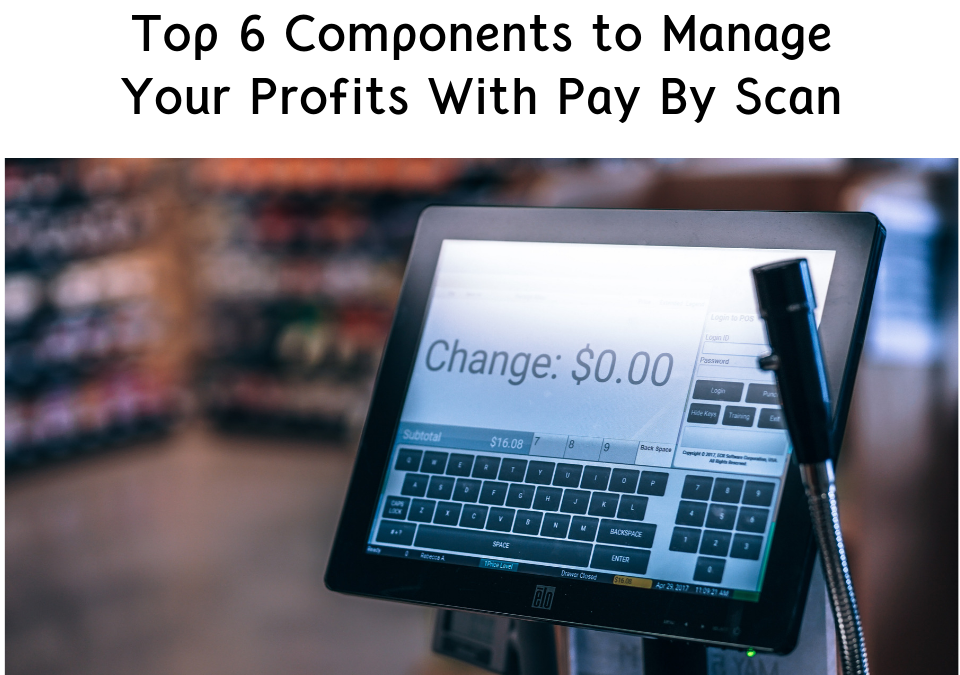
GrowerOnline Updates August 2019
August 23, 2019
DTS Cumulative Update September 2019
September 13, 2019A crucial aspect of a successful pay by scan live good program is the data that represents your product flow into and out of the stores. The data from your vendor managed inventory system is your ‘eye’ in the store. Good data can help you make more timely and wise decisions regarding inventory management and help you take the best advantage of profit opportunities.
Below are 6 key data areas that are important for a successful pay by scan program.
1. Deliveries
What did you deliver to the store and when was it delivered? Make sure your vendor managed inventory solution provides for the capture or upload of your store delivery data. This includes the chain/store, the SKU, the quantity and unit of measure and the delivery date at the very minimum.
2. Sales
Knowing the SKU and quantity and date helps you more closely track the actual inventory levels in the store. Knowing when you last delivered gives you a way to estimate product freshness during key times of the season.
Sales data is your window into how fast inventory is leaving a given store. Sales data can be received from retailers via EDI transactions such as 850 or 852 EDI documents or by vendor reporting sites.
The key data you need includes the store where the sale occurred, the SKU, the quantity sold and the date of the transaction and the retail price if possible.
Most annual, perennial and edible growers will need daily sales data since the product seasons are shorter and large swings in inventory can occur quickly under the right sales or weather conditions.
Growers of larger items like trees and shrubs may be able to use weekly or twice-weekly summaries. The frequency of the data depends on the sales velocity and shelf life of the products you place.
It is important that your vendor managed inventory solution automatically uploads the sales data. There can be a large quantity for larger growers. Handling this data manually takes a lot of staff time.
3. Dump or Scrap
Bad or dead product needs to be dumped and removed from store inventory and replaced with fresh product to keep the in-store perception of your product quality as good as possible.
Your merchandisers or in store personnel need quick and accurate ways to record scrap so that any inventory adjustments can be made in the system as soon as possible to allow any replenishment order calculations to account for that. Make sure your vendor managed inventory system allows for the recording via online or mobile capability the dump or scrap that is required.
4. Sales and Inventory Statistics
Once you have your basic sales data, your system vendor managed inventory system should calculate your key sales statistics. Growers use many statistics to get better insight into their in- store situation but here are a just a few key statistics:
- On Hand Inventory – the current inventory by SKU – this is a calculated number that should go from your last delivery and include any sales that have occurred as well as any scrap or shrink.
- Weeks On Hand – this is the number of weeks of supply of the product at the rate of sales for the period under review.
- Sales/period – This is simply an aggregation of the total sales quantity for a given period, day, week, month grouped by store or SKU etc.
- Sell through – this is the percentage of sales of inventory. It is a measure of how fast product is moving. Sell through can be expressed in quantity or dollars. In cases where a retailer engages in discounting or marking down prices, the dollar sell through is a measure of the revenue the units are generating.
- Historical statistics – these numbers allow for comparison to last year and can provide insight for replenishment planning and variance analysis.
Make sure your vendor management inventory system supports the calculation of the statistics that are meaningful to your business and that you can add additional customizations as you need.
5. Replenishment Quantities
Once you have a picture of the data that represents the flow of product in and out of the stores, deciding how to calculate the actual amount of product to ship to the store is very important.
Some systems call this ‘suggested order quantity’ or ‘suggested order amount’ or ‘reorder point formula’.
There are some accepted forms of the equation that may or may not work for your business or situation. Make sure your vendor managed inventory system will allow you to customize the way the suggested order amount is calculated.
You also need a system that will support the extreme seasonality of most live goods replenishment. This means that you have to build inventory early in the season at the right time, maintain proper levels during the main part of the season, then allow the stores to drain out the inventory at the tail end of the season where you still need product in the stores but overstocking risks extra loss.
6. Historical Data
Make sure your vendor managed system supports historical data. Accurate historical data can further inform your replenishment staff about seasonal variances, help prepare for anomalies and it can serve as a reminder for how products flowed to stores in prior years.
These are 6 key areas of data that can give additional insight for making your pay by scan program a success.
Learn more about the Pay by Scan model arrangement between growers and big-box retailers as well as information on software capabilities needed for this model and key factors for success. Read the Pay by Scan Playbook here.
Check out our DTS/Merch solution for vendor managed inventory or contact us to see how we can help your business with vendor managed inventory.





